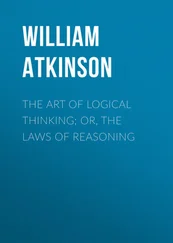Approbativeness shows itself in a strutting walk; while Self-Esteem manifests in a dignified carriage. Deficient, Self-Esteem shows itself in a cringing walk; while strong Reverence produces a respectful, deferential carriage. Approbativeness causes a slight swagger, with a defiant carriage of the head, while Combativeness manifests in a "get out of my way" pushing walk, the head being slightly lowered as if to "butt" a way through. Cunning manifests in a foxy, sly walk; while Cautiousness shows in a timid, hesitating step; and Acquisitiveness in a general carefulness and watchfulness as manifested in gait. A combination of Cunning, Cautiousness and Acquisitiveness, which is quite common, manifests in a light, stealthy step, giving the suggestion of "tip-toeing," and in extreme cases may show even the "snaky" gliding motion from side to side, in noiseless progression.
A little study and observation will convince anyone that the walk and carriage of an individual correspond very closely to his general character. And just as we may recognize one's mental characteristics when reproduced in outer form in the walk; so may we deduce the existence of mental characteristics in a stranger, from the outer form of his walk and carriage. The study of walk and carriage is very interesting, and will repay one for the time and trouble expended upon it. One may practice by observing the walk of an individual whose character is known, for the purpose of seeing the outer form of these characteristics; and also by observing the walk of those whose characters are unknown, and endeavoring to form an idea of their mental states and characteristics by means of their peculiarities of gait and carriage. One will be astonished at the proficiency attained in a short time by a little practice along these lines.
The Voice is a great revealer of character. Prof. O. S. Fowler says: "Whatever makes a noise, from the deafening roar of sea, cataract, and whirlwind's mighty crash, through all forms of animal life, to the sweet and gentle voice of woman, makes a sound which agrees perfectly with the maker's character. Thus the terrific roar of the lion, and the soft cooing of the dove, correspond exactly with their respective dispositions; while the rough and powerful bellow of the bull, the fierce yell of the tiger, the coarse, guttural moan of the hyena, the swinish grunt, the sweet warblings of birds, in contrast with the raven's croak and the owl's hoot, each correspond perfectly with their respective characteristics. And this law holds equally true of man. Hence human intonations are as superior to brutal as human character exceeds animal. Accordingly, the peculiarities of all human beings are expressed in their voices and mode of speaking. Coarse-grained and powerful animal organizations have a coarse, harsh and grating voice, while in exact proportion as persons become refined and elevated mentally, will their tones of voice become correspondingly refined and perfected."
Prof. L. A. Vaught says: "Affectionate voices always come from the backhead. Heavy, thunderous voices always come from the sidehead. Egotistical voices come from the crown of the head. Kind, respectful and straightforward voices come from the top-head."
A clear, distinct utterance is held to indicate clear, logical thought, while indistinct, confused, slurring utterance is indicative of careless, illogical and hasty thought processes. Sharp and shrill notes denote nervous tension and lack of restraint, as witness the voice of the shrew or the hysterical woman, or the high-strung nervous man. Self-restraint is shown by calm, deep, forceful utterances. Slowness in delivery denotes slow, deliberate mental processes, while quickness, and "snappiness" in speech, denotes quick, active habits of thought. The cheerful voice of the optimistic person, and the rasping whine of the chronic pessimist, are well known. The voice of self-reliance, and the voice of fear and lack of self-esteem, are easily recognized. The strident, overconfident note of the boaster and vain-glorious person, is easily distinguished from that of the modest, careful, reliable person.
All the several mental Qualities manifest in the voice, in tone, pitch or feeling. The Emotive Qualities give the affectionate voice; Self-Esteem gives the confident voice; Approbativeness gives the voice of affectation and conceit; Combativeness gives the "let me alone" tone; Destructiveness gives the "get out of my way" note; Cunning and Acquisitiveness give the tone of deceit and flattery; and so on, through the entire scale. In studying voices it will help you to ask "What Quality or Qualities produce this voice?" in each case. Study the voices of those whose characteristics you know, and then apply the experience to others whose characteristics are unknown.
Laughter is full of the expression of character. One may often accurately determine the character of a person whose face is not seen or known. A hearty laugh is indicative of sympathy, companionship and general sociability, as well as a well developed sense of humor. A giggle is indicative of pettiness, trifling and general mental light-weight. The repressed laugh shows self-control and often caution and cunning, the tone denoting the difference. The vulgar "haw-haw" denotes a correspondingly gross nature. The peculiar shrill, rasping, parrot-like laugh of the courtesan is typical, and when ever heard should act as a note of warning. It is difficult to state in words the various qualities of the laugh, but each is distinctive and well expresses the Quality causing it. It may be said that each and every mental Quality has its corresponding note in the laugh, which note may be learned and recognized by a little practice and actual observation.
The manner of shaking hands is indicative of the characteristics of the individual. Handshakes may be divided into three general classes, viz, (1) the hearty handshake, which indicates good-feeling, earnestness, and interest; (2) the mechanical handshake, which denotes indifference, lack of feeling, and lack of interest; and (3) the selfish handshake, which denotes cunning, heartlessness, and desire and disposition to take advantage of the other party. There is a "something" in the handshake which is almost impossible to express in words, but which is recognized instinctively by those having Human Nature well developed. It is more of a "feeling" of certain Qualities manifested by the other person. A little thought and attention paid to this subject will tend to develop this recognition on the part of one deficient in it. One may, with a little practice, learn to distinguish between the honest and the dishonest; the moral and the immoral; the active and the passive; the energetic and the slothful; the grasp of good-fellowship, and that of superciliousness; the friendly and the antagonistic; the candid and the deceitful; and all the other various kinds of handshakes. Mental states manifest in outer form in handshakes as in many other physical actions and appearances.
First study the several Qualities in their inner aspect, and then learn to distinguish the various outer forms of each. From the inner proceed to the outer, and having learned the way you will be able to retrace your steps from the outer to the inner in the case of other persons. The principle once grasped, the rest is all a matter of practice and experience.
FINIS.
The Inner Consciousness: A Course of Lessons on the Inner Planes of the Mind, Intuition, Instinct, Automatic Mentation, and Other Wonderful Phases of Mental Phenomena
Table of Content
Lesson I. Inner Consciousness.
Lesson II. The Planes of Consciousness.
Lesson III. The Basements of the Mind.
Lesson IV. The Mental Storehouse.
Читать дальше












